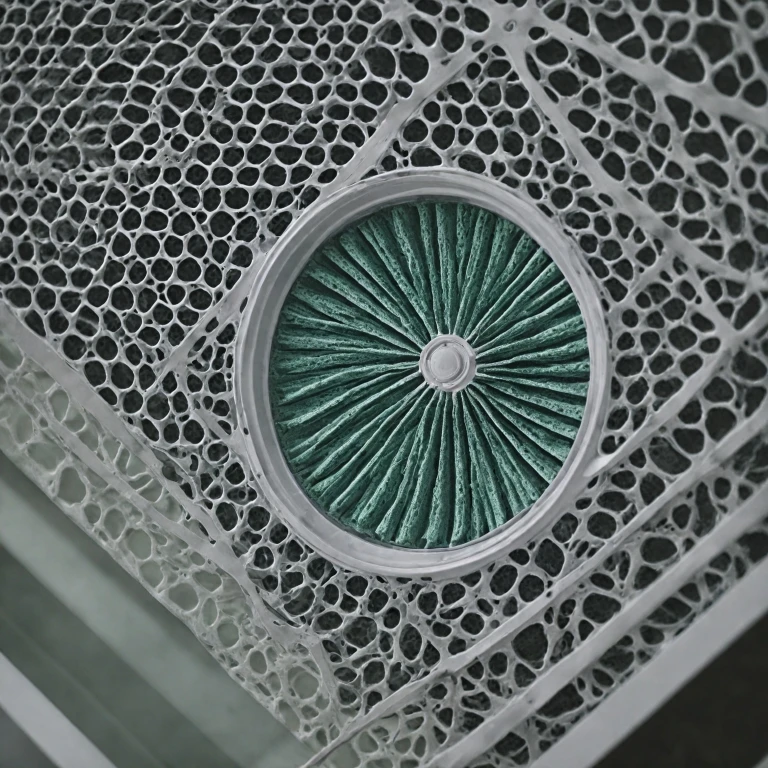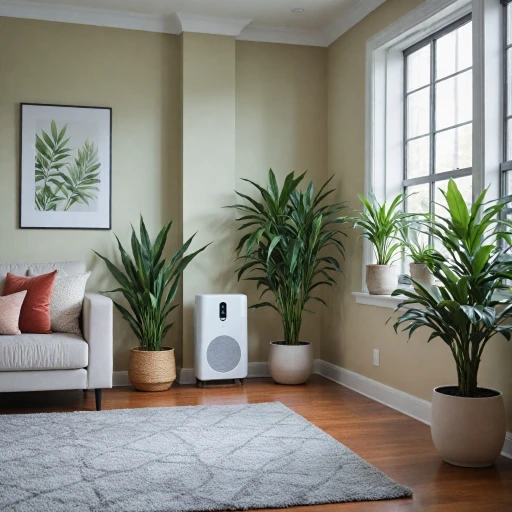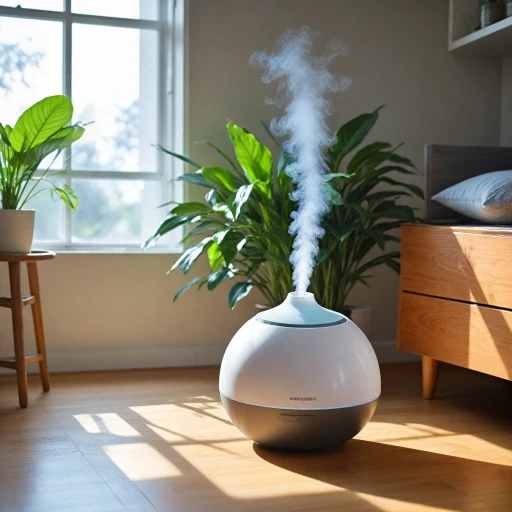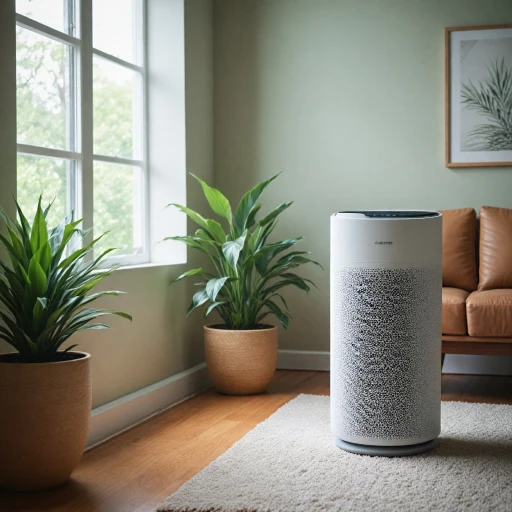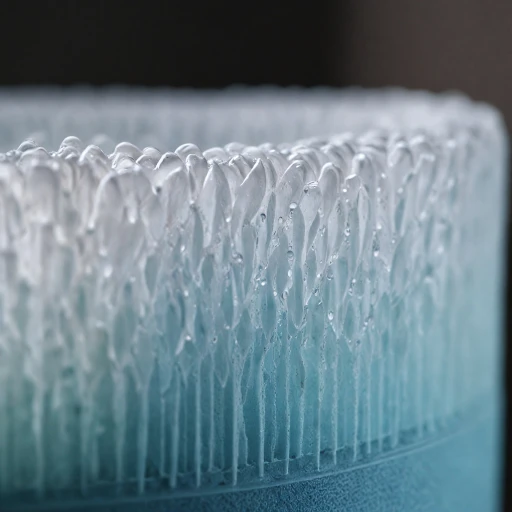What is a 5-Micron Filter?
Exploring the Basics of 5-Micron Filters
When diving into the world of air purification, understanding the components that make up these systems is crucial. One such component is the 5-micron filter. But what exactly is a 5-micron filter? In simple terms, it's a type of filter that captures particles as small as 5 microns in size. To put it into perspective, a human hair is about 70 microns in diameter, so these filters are designed to capture much smaller particles.
5-micron filters are often used in various filtration systems, including water filtration systems, to remove sediment and other small particles. They are particularly effective in capturing larger particles that can affect air and water quality. These filters are commonly found in both residential and commercial settings, where maintaining a clean environment is paramount.
While exploring different filter types, it's important to consider the right filters for your specific needs. The choice often depends on the type of pollutants you are dealing with, the size of the area you want to purify, and your budget. 5-micron filters are typically more affordable, making them a popular choice for many households and businesses.
In terms of construction, these filters can be made from various materials, including string wound and melt blown. Each type has its own advantages, with some offering better durability and others providing more effective filtration. It's also worth noting that while 5-micron filters are effective at capturing larger particles, they may not be sufficient for removing ultra-fine particles or certain types of bacteria and viruses.
As you explore further into the topic, you'll find that the effectiveness of these filters can vary based on the specific application and the overall design of the filtration system. In the following sections, we'll delve deeper into the importance of particle size in air purification, compare different filter types, and explore the applications and maintenance of 5-micron filters.
The Importance of Particle Size in Air Purification
Particle Size Matters in Air Purification Systems
Understanding particle size is crucial for selecting the most effective air filtration system for your home or business. A 5-micron filter plays a role in this process by targeting particles present in the air, including sediment, dust, and pollen. These particles can compromise air quality and affect respiratory health if not captured appropriately.
The primary function of a 5-micron filter is to trap small particles that can easily pass through larger filter sizes. Compared to larger micron filters, a 5-micron option effectively captures fine particles without significant clogging, maintaining efficient filtration over time. This size is especially beneficial for addressing both air and water quality concerns, capturing sediment from water systems and improving house water filtration.
Choosing the right particle size depends significantly on your specific needs and the environment being filtered. For instance, systems designed for well water may require a filter cartridge that emphasizes sediment filtration, while systems focusing on air purification might prioritize the removal of pollutants and allergens.
A comprehensive understanding of filter types helps in effectively comparing 5-micron filters to other filters, such as HEPA and carbon filters. Each filter type offers distinct benefits, depending on the particles they are designed to capture and remove.
Overall, selecting the correct micron size ensures that the filtration system you choose effectively meets your needs, whether it involves reducing sediment in water systems or maintaining cleaner air in your household. Always consider the nature of the particles you aim to filter out to choose the most appropriate system effectively.
Comparing 5-Micron Filters with Other Filter Types
Understanding Different Filter Technologies
When considering the filtration capabilities of air purifiers, 5-micron filters hold a unique position. The term micron refers to the size of the particles that the filter can capture, with one micron being one-millionth of a meter. This makes the 5-micron filter effective for capturing various types of sediment and particles that are not visible to the naked eye, perfectly capturing both air and the needs of a sediment water filter in many systems. Comparatively, other types of filters such as HEPA or activated carbon have different target particles. HEPA filters are known for their efficiency in removing particles as small as 0.3 microns. They are effective in capturing allergens and small particles, offering a more comprehensive filtration than a 5-micron sediment filter, ideal for those concerned with air quality issues in a house setting. On the other hand, carbon filters focus on removing smells, chemicals, and gases. For those dealing with odors in their house or business, activated carbon might be more relevant than a simple sediment water filter. In the realm of water filtration, such as well water or house water systems, a 5-micron filter cartridge is often used in conjunction with larger filtration systems. These filters excel in the removal of sediment or particulate matter, effectively enhancing water quality. Products such as reverse osmosis systems can further benefit from a 5-micron filter to pre-filter sediment, ensuring the longevity of the subsequent filtration stages. While the 5-micron sediment filter offers great utility in specific contexts, such as pre-filtration in multifaceted filtration systems, this filter type might not serve well on its own if your primary need is to capture extremely small particles or odors. Thus, understanding the importance of aircare humidifier filters along with the specific requirements of your filtration system is key to enhancing both water and air quality effectively.Applications and Effectiveness of 5-Micron Filters
How 5-Micron Filters Perform in Different Environments
5-micron filters play a significant role in various filtration systems. They are particularly effective in environments where the goal is to reduce large sediment particles, such as those found in house water systems. These filters are adept at capturing particles that might otherwise bypass larger pore sizes. In industrial settings, 5-micron filters are often used in pre-filtration processes. This step is crucial in protecting sensitive downstream equipment from avoidable damage caused by sediment and particulate matter. Additionally, in homes relying on well water, a 5-micron sediment filter acts as the first line of defense against larger contaminants that can affect water quality and household plumbing. Filters in the 5-micron range also serve a vital function in reverse osmosis systems. They act as a pre-filter to prevent clogging of more precise membranes that follow in the filtration sequence. Furthermore, commercial businesses and small establishments utilize these filters to maintain product integrity when water quality directly affects the end product, such as in restaurants and coffee shops.Dual Purpose for Air and Water Systems
Not limited to water filtration, 5-micron filters have found applications in air purification systems as well. They excel in removing dust particles and other larger airborne contaminants within a household. For air purifiers, manufacturers often recommend the use of filters with multiple layers, including 5-micron elements, to ensure a more thorough house filtration. It’s important to consider the effectiveness, ease of replacement, and the price of filter products. Reputable products typically offer free replacement cartridges or the option for the fastest delivery if ordered online. The performance of 5-micron filters can be enhanced by combining them with string wound or melt blown materials in cartridge filters, providing greater durability and efficiency in both air and water systems. Whether applied in air or water filtration, the consistency in which 5-micron filters improve filtration outcomes makes them a popular choice across a variety of settings.Maintenance and Replacement of 5-Micron Filters
Guidelines for Maintaining Optimal Performance
Ensuring your air purifier runs efficiently requires regular attention to the 5-micron filter. While these filters boast a decent lifespan, diligent upkeep is crucial to maintaining air quality.- Regular Inspection: Check for visible particles or discoloration. If the filter appears dusty or discolored, it might be time for a change.
- Cleaning and Maintenance: Depending on the type of filter, some may allow for gentle washing. However, filters like the string wound and melt blown varieties are often designed for single-use and should be replaced rather than cleaned to ensure effective sediment and particulate capture.
- Replacement Schedule: Adhere to the manufacturer's recommended replacement timeline. A 5-micron water filter or an air filter can range in duration, contingent on usage and pollution levels in your area.
Choosing the Right Air Purifier with a 5-Micron Filter
Selecting the Optimal Air Purifier: Key Factors and Considerations
Choosing the right air purifier with a 5-micron filter is essential for effective air purification in your home or business. When evaluating different models and products, consider various factors to ensure you select the best system suited to your needs.- Filtration Efficiency: Understand the micron size capability of the filter. A 5-micron filter is designed to capture a significant portion of sediment and small particles, but be sure to check the efficiency rating for specific pollutants like dust, pollen, and spores.
- Compatibility with Existing Systems: If you have existing water systems or air filtration setups, make sure the air purifier and its filters are compatible. This includes checking for proper fit and the ability to integrate with house filtration systems.
- Maintenance and Filter Replacement: Consider the ease of maintenance and the availability of replacement cartridges. Proper maintenance is crucial for continued performance. Check if the product offers fast delivery options for replacements and whether it's easy to replace filters like the sediment or melt-blown types.
- Cost Considerations: Price is always a factor. Evaluate the cost of the air purifier and its filter replacements. Quality products often come at a higher initial price but can offer better long-term water quality and efficiency, especially for well water or sediment-heavy areas.
- Consumer Feedback: Look for user reviews with detailed experiences. Higher-rated models often have more comprehensive filtration capabilities and better customer support. Aim for products that consistently receive good stars for ease of use and maintenance.
